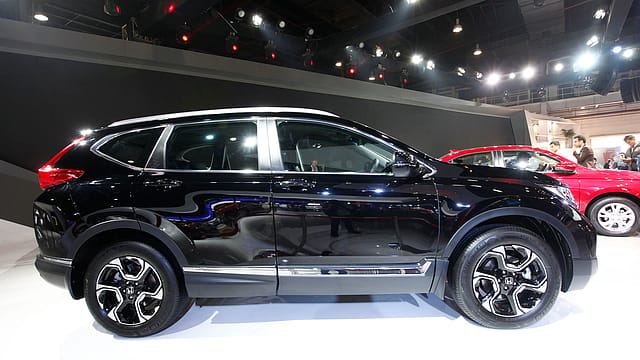Steep price hike due to BSVI-II; auto sector must stay cautious: FADA
ADVERTISEMENT

Despite the automotive industry in India seeing its best festive season in four years—with customers for every segment stepping out in droves to partake in festive purchases—with the imminent migration of manufacturing on-board diagnostics (OBD)-2-compliant vehicles, which will entail steep price increase across all categories of vehicles, it is prudent for the industry to remain cautious with the year ending, the Federation of Automobile Dealers Association (FADA) says in its monthly update.
"As anticipated earlier, the passenger vehicle (PV) segment saw the best year in a decade by outgrowing 2020 numbers by 2%. When compared to the pre-pandemic festive season of 2019, overall retails were up by 6%. All the categories were in green—with two-wheelers, three-wheelers, commercial vehicles, PVs, and tractors growing by 2%, 2%, 14%, 18%, and 55% respectively," says Manish Raj Singhania, president, FADA. In October, the auto retail industry saw an overall growth of 48%. "With most of the month under festive period, the sentiments were extremely positive across all categories of dealership outlets," he adds. During the 42-day festive period, total vehicle retails were up 28% from last year.
According to Singhania, even the two-wheeler segment—which has borne the brunt of pandemic-induced disruptions—showed a growth of 6% when compared to October 2019—a pre-pandemic year. "With both Navratri and Deepawali majorly falling in a single month, the month of October saw double footfall at dealerships. Dealers say that sentiments have also started improving at the rural level but the same needs to sustain for at least the next three to four months. Apart from this, new launches and good customer schemes also played a pivotal role in helping revival in demand," explains Singhania. 15,71,165 two-wheelers were sold in October, growing, for the first time, post-pandemic by 6%.
January 2026
Netflix, which has been in India for a decade, has successfully struck a balance between high-class premium content and pricing that attracts a range of customers. Find out how the U.S. streaming giant evolved in India, plus an exclusive interview with CEO Ted Sarandos. Also read about the Best Investments for 2026, and how rising growth and easing inflation will come in handy for finance minister Nirmala Sitharaman as she prepares Budget 2026.
The PV segment continues to show the highest levels of growth, and the festive cheer gave it a decadal-high growth. "This segment continues to see extremely high demand, especially in SUV and Compact SUV segments including higher variants in most of the product categories. With better vehicle availability coupled with new launches, the segment also witnessed the best festive period in a decade by surpassing the 2020 festival sale by 2%," he adds. With 3,28,645 passenger vehicles sold in October, the segment saw an 18% growth compared to 2019.
The three-wheeler segment in India, according to Singhania, has continued to show a strong pivot towards electrification. However, partly due to permit-related issues, the sales of three-wheelers in India de-grow by 0.6%, compared to the pre-pandemic year of 2019. "The sub-category figures clearly show that a shift is happening towards EV adoption while ICE vehicles are no more favourites. In few pockets due to permit issues, new vehicle sales have taken a hit during the month," he adds.
However, FADA has flagged the OBD-2 norms—which are part of the BSVI Stage II regulations—as a potential headwind that could affect demand. From April 2023, every passenger vehicle will be mandated to fit an onboard diagnostics device called OBD-2. This device will monitor the emission levels in real time, and the vehicle will have to comply with the emission levels in the real world, as opposed to complying in an idyllic setting in a laboratory. Should the emission levels cross the permissible limit; the device will alert the driver via warning lights to take the vehicle to the service centre.
Making vehicles OBD-2 compliant will significantly drive the price up, as it would require hardware and software upgrades to make the vehicle capable of monitoring the catalytic converter and the contents of emissions. While this transition will not be as brutal as the migration from BS-IV to BS-VI norms, the disproportionate supply of semiconductors is going to stymie scaling up the manufacturing of pieces of equipment required to make vehicles compliant. "Most of the OEMs will now start migrating towards manufacturing OBD-2 norms vehicles. This will definitely see a steep price increase across all categories of vehicles as and when they hit the market. Also with year-end coming close, many customers wait for vehicles manufactured in the new year. FADA hence remains cautious as the auto industry approaches the year-end period," reads the note from FADA.
On a more immediate level, with festivities ending, the immediate next month generally witnesses a certain amount of softness in sales. While farmers will start receiving their crop realisations, the overall sentiment continues to show some headwinds—especially in the two-wheeler rural segment. FADA believes that for auto retails to show strength, the two-wheeler segment will have to grow for at least three-four months over pre-pandemic months to come out of the woods.
